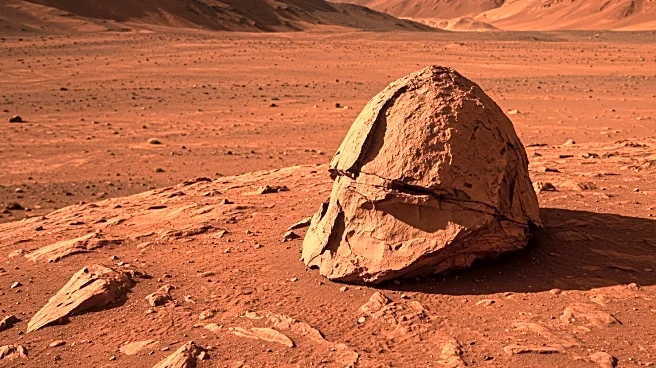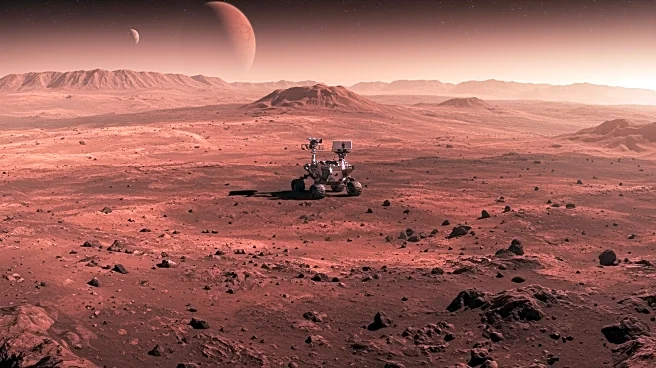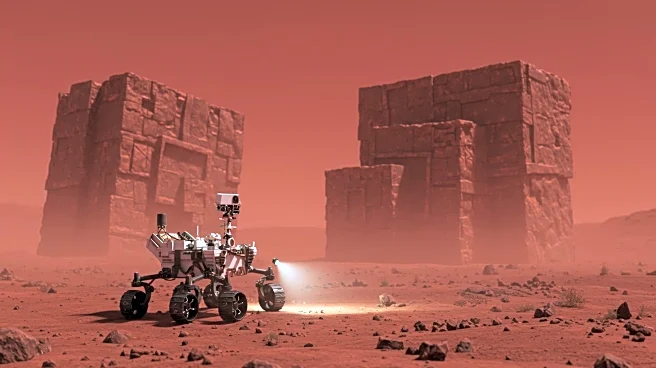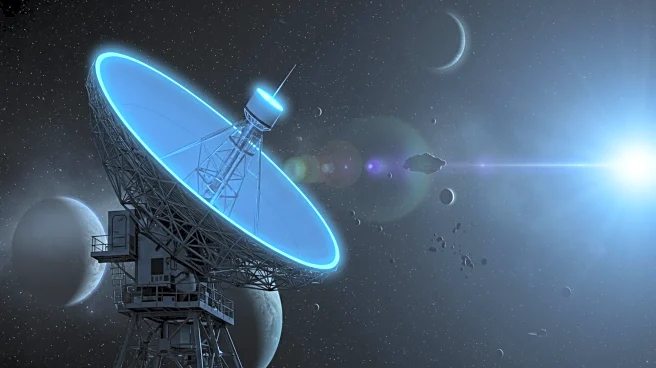What's Happening?
The Perseverance rover, part of NASA's Mars exploration mission, has photographed a rock on Mars that bears a striking resemblance to a medieval helmet. This image was captured on August 5, 2025, using the Mastcam-Z instrument, which consists of a pair of cameras mounted on the rover's mast. These cameras provide high-resolution stereo images, allowing scientists to study unusual formations from a distance. The rock features a pointed peak and a nodular texture, similar to helmet designs from centuries ago. On Earth, such textures can result from chemical weathering, mineral precipitation, or volcanic processes. The spherical formations on the rock have intrigued scientists, as they may have formed when groundwater passed through sedimentary rock pores. However, researchers are not certain of the exact formation process. The Perseverance team plans to continue analyzing similar rocks to understand Mars' environmental history, including the effects of wind, water, and internal processes over billions of years.
Why It's Important?
This discovery is significant for understanding Mars' geological history and environmental conditions. The study of such formations can provide insights into the planet's past, including the presence and movement of water, which is crucial for assessing its habitability. The helmet-shaped rock adds to the collection of peculiar formations found on Mars, illustrating the phenomenon of pareidolia, where humans perceive familiar shapes in random data. These findings contribute to the broader scientific effort to reconstruct Mars' environmental history, potentially aiding future exploration and the search for signs of life.
What's Next?
The Perseverance science team will continue to analyze other rocks on Mars to unravel the mystery of these spherical formations. This ongoing research aims to reconstruct the environmental history of Mars, providing a clearer picture of how natural processes have shaped its landscape. The findings could influence future Mars missions and the search for life on the planet.
Beyond the Headlines
The phenomenon of pareidolia, where humans see familiar shapes in random objects, is highlighted by this discovery. This tendency can affect scientific interpretation and public perception of space exploration findings. Understanding this psychological aspect is important for accurately communicating scientific discoveries.











